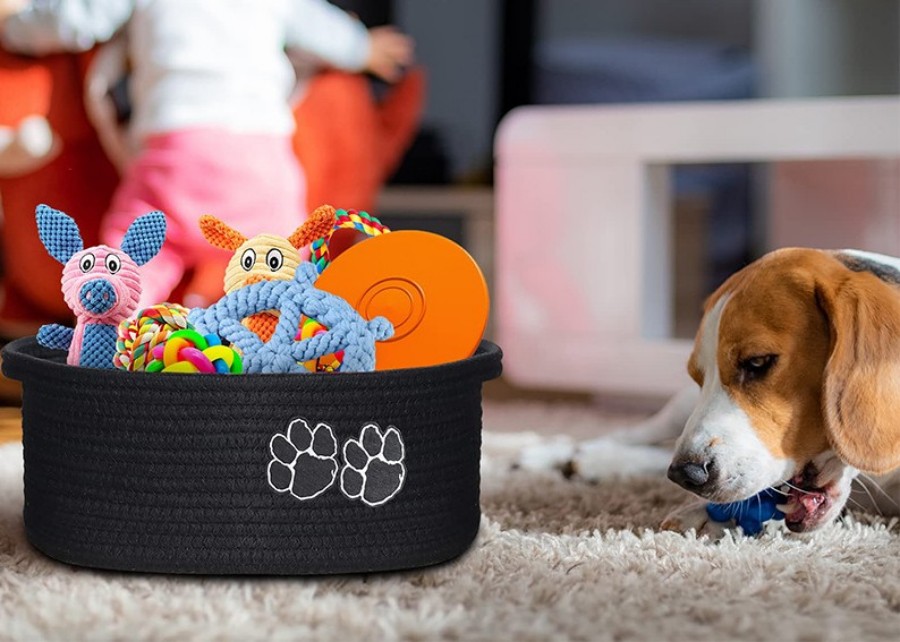Tired of tripping over dog toys? Wish your furry friend would clean up? This simple training trick can restore order and make playtime even more fun.
To teach a dog to put toys in a basket, start by teaching a "drop it" command over the basket. Use lots of praise and treats. Gradually increase the distance, encouraging your dog to carry the toy to the basket and drop it inside for a reward.
Teaching your dog to clean up their toys isn’t just a neat trick. It’s a great way to bond with them and provide mental stimulation. As a pet supply manufacturer with over a decade of experience, I’ve seen firsthand how the right tools and techniques can make all the difference. It turns a chore into a fun game that strengthens your relationship. Let’s break down how you can get started and turn your messy pup into a tidy helper.
What are the basic steps to train a dog to clean up toys?
Feeling overwhelmed by where to start? Training your dog to clean up seems complex, but it’s just a few simple steps. I’ll guide you through the process.
The basic steps are: 1. Choose a suitable basket. 2. Teach a solid "drop it" command directly over the basket. 3. Use high-value rewards like treats or a favorite toy to reinforce the behavior. Consistency is the most important part of the training.
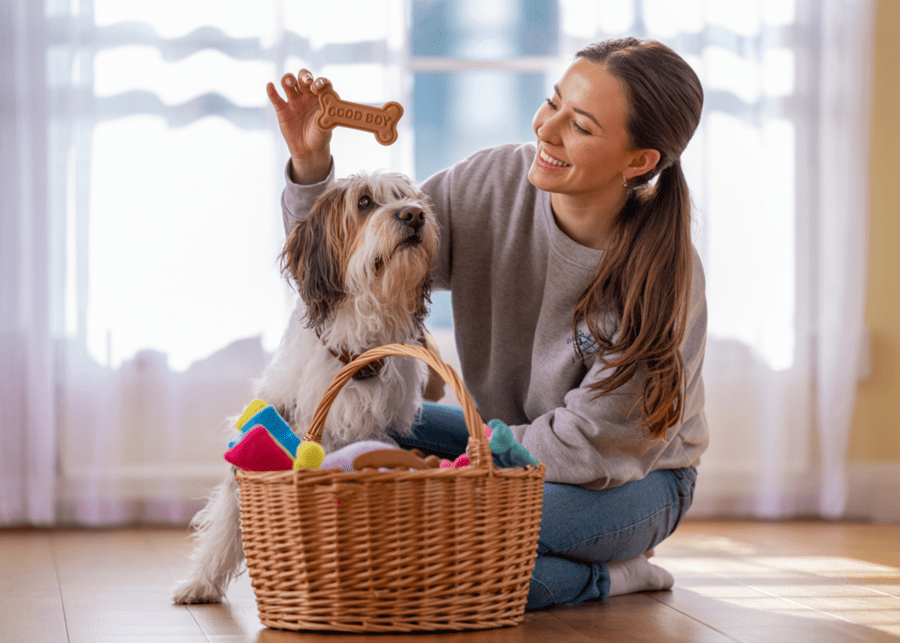
Dive Deeper: Breaking Down the Training Process
Getting this right is all about setting your dog up for success. Each step builds on the last, creating a clear path for your dog to understand what you want. Based on my experience helping brands design products, the tools you use are just as important as the technique.
First, you need the right basket. A low-sided, wide-mouthed basket is ideal. It makes it physically easy for your dog to drop the toy in. If it’s too tall or the opening is too small, your dog might get frustrated and give up. A sturdy material that won’t collapse is also key.
Next, you focus on the "drop it" command. Start by holding a toy your dog likes. When they take it, immediately offer them a high-value treat. To get the treat, they have to drop the toy. Once they do, say "drop it" and give them the treat. Practice this until they drop the toy on command. Then, start practicing this with the basket right underneath their mouth, so the toy falls in by default. Every time it lands in the basket, give them lots of praise and a treat.
Finally, the reward system keeps them motivated. It has to be something your dog truly loves. This makes the "game" of cleaning up more exciting than just keeping the toy.
| Step | Action | Why It Works |
|---|---|---|
| 1. Choose the Right Basket | Select a low, wide, and sturdy basket. | Makes it easy for the dog to succeed. Prevents frustration from a difficult target. |
| 2. Teach "Drop It" | Practice the "drop it" command directly over the basket. | Associates the command with the action of placing the toy inside the basket. |
| 3. Reward Generously | Use high-value treats or praise every time the toy lands in the basket. | Positive reinforcement makes the dog want to repeat the behavior. |
How long does it take to teach a dog the toy basket command?
Wondering how much time this will take? You might worry it’s a long process, but with realistic expectations, you’ll see progress faster than you think.
Training time varies by dog. A smart breed might learn in 3-7 days, while most dogs take 1-2 weeks. Factors like your dog’s age, personality, and your consistency play a big role. Stay patient and keep sessions short and fun to see the best results.
Dive Deeper: Setting Realistic Timelines
Every dog learns at a different pace. It’s important to be patient and not compare your dog to others. However, my years in the pet industry have shown me some common patterns. Your dog’s breed, personality, and the training environment you create all impact the timeline.
A highly intelligent and eager-to-please breed like a Border Collie or Poodle might pick up the entire sequence in just a few short sessions over a week. An average dog, like a Labrador or Beagle, will likely get it within one to two weeks of consistent, daily practice. More independent or stubborn breeds might take a bit longer, perhaps two to four weeks, to perform the command reliably.
Several factors can speed up or slow down this process. From our clients’ feedback, the right equipment is a major one. A dog-friendly basket, as I mentioned, removes physical barriers. The types of toys also matter; a dog might be less willing to give up a super high-value squeaky toy than a simple rope toy. But the single most important factor is you. Short, fun, and consistent training sessions every day will always be more effective than one long, frustrating session on the weekend.
| Dog’s Learning Speed | Estimated Training Time | Key to Success |
|---|---|---|
| Fast Learner (e.g., Poodle) | 3 – 7 days | Keep sessions challenging and engaging. |
| Average Learner (e.g., Labrador) | 1 – 2 weeks | Consistency is crucial. Short, daily sessions work best. |
| Slower Learner (e.g., Basset Hound) | 2 – 4 weeks | Extreme patience and high-value rewards are necessary. |
What commands should I use when teaching toy cleanup to dogs?
Confused about what to say? Using the right words can make or break your training. Let’s find the perfect command for you and your dog.
Start with a simple cue like "Clean up" or "Put away." Once your dog understands the action, you can use more complex commands like "Find the basket" followed by "Drop it." Choose one command and stick with it to avoid confusing your dog.
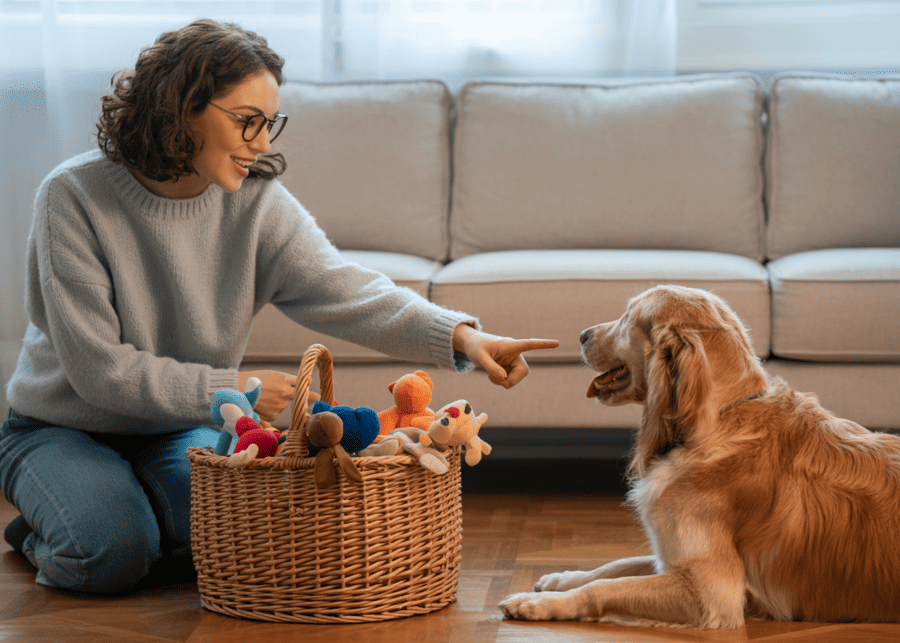
Dive Deeper: Choosing Your Words Wisely
The specific words you use are less important than how consistently you use them. A dog doesn’t understand English; they learn to associate a specific sound with a specific action. That’s why clarity and consistency are everything.
I always advise starting with a single, simple command. Something like "Clean up," "Tidy," or "Basket" works great. This single cue comes to mean the entire sequence: find a toy, pick it up, carry it to the basket, and drop it in. This is the easiest approach for most dogs and owners. You want to choose a phrase you don’t use in everyday conversation to avoid confusion.
For more advanced training, or for dogs that are already skilled with commands, you can use a two-part command system. This breaks the task down. You might say "Find the basket," which cues the dog to go stand over the basket, and then "Drop it." This gives you more precise control and is excellent for building up distance and reliability. For example, you can send your dog to the basket from across the room. The key is to master each part separately before linking them together.
| Command Type | Example(s) | Best For | Training Tip |
|---|---|---|---|
| Simple Command | "Clean up", "Tidy", "Put away" | Beginners and most dogs. It’s easy to learn and remember. | Say the command right as your dog is about to drop the toy in the basket. |
| Command Combo | "Find the basket" + "Drop it" | Advanced training, dogs who know basic commands well. | Teach "Find the basket" as a separate targeting skill first. |
Have more than one dog? Training them to clean up together can feel like chaos. But a few simple strategies can prevent competition and make it a team effort.
For multiple dogs, use a large basket to prevent resource guarding. Train each dog individually first, then have them take turns cleaning up one toy at a time. Always supervise them and reward calm, cooperative behavior to create a positive association with sharing the task.
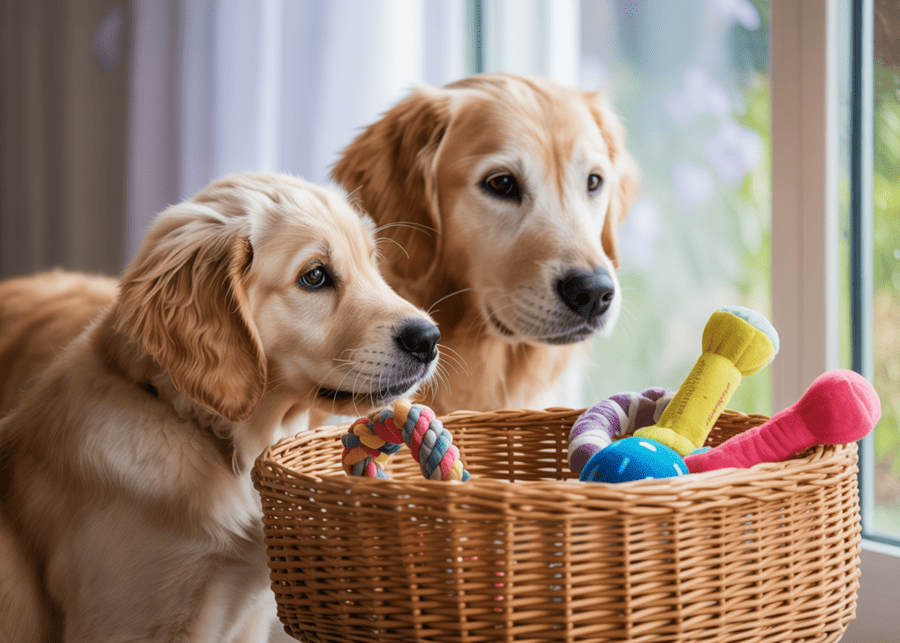
Dive Deeper: Harmonizing a Multi-Dog Household
Training multiple dogs together adds a layer of social dynamics. You have to manage potential competition, different learning speeds, and the pack hierarchy. It’s a challenge, but very achievable.
The first problem to solve is resource guarding. A small basket can feel like a high-value item that needs to be defended. As a manufacturer, we often create extra-large, open-top baskets specifically for multi-pet homes. A big, wide-mouthed basket feels less like a personal possession and more like a communal space, reducing tension.
The best strategy is to train each dog separately at first. Get each one reliable with the "clean up" command on their own, without the distraction or pressure of the other dog. Once they both know the game, you can bring them together. Start a session with one dog while the other is in a "stay" or on a leash nearby. Have the first dog clean up a toy, then reward them. Then, it’s the second dog’s turn. This turn-taking teaches them patience and shows them that everyone gets a chance and a reward. Always end on a positive note, and keep sessions short to prevent them from getting over-excited or competitive. It’s about cooperation, not speed.
What type of basket works best for dog toy storage training?
Does the basket really matter? You might think any box will do, but the right basket can make training much easier for your dog and for you.
The best basket is sturdy, has low sides, and won’t tip over. Choose one that is about 60-80% of your dog’s shoulder height so they can easily drop toys in. Materials like soft felt, canvas, or cotton rope are safe and durable for pets.
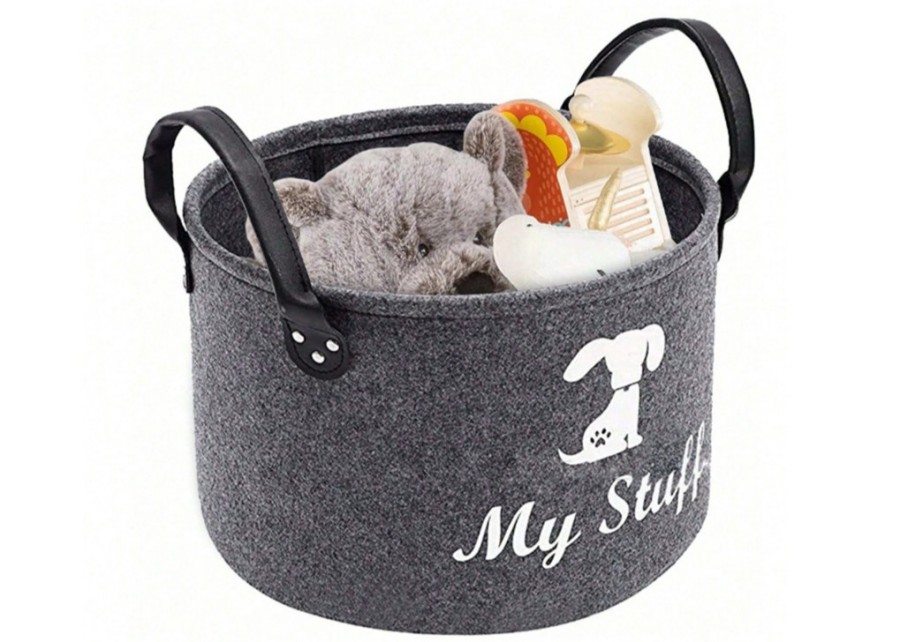
Dive Deeper: The Technical Specs of a Perfect Toy Basket
From a product design and manufacturing perspective, the dog toy basket is a critical piece of training equipment. The right design removes physical and psychological barriers for the dog, making them more likely to succeed.
The most important technical specification is height. The rim of the basket should ideally be between 60% and 80% of your dog’s height at the shoulder. This is the sweet spot. If it’s too tall, they have to awkwardly crane their neck. If it’s too short, they might overshoot it. This simple measurement can dramatically reduce training time.
The material is also crucial for safety and durability. You want something soft that won’t hurt your dog’s mouth but is tough enough to withstand some chewing or scratching. In our production lines, we focus on three main materials for their unique benefits. A stable, non-slip bottom is also a feature we incorporate, as a sliding basket can startle a dog and discourage them from approaching it.
| Material | Pros | Cons | Best For |
|---|---|---|---|
| Felt | Lightweight, soft on the mouth, modern look. | Can attract fur, may lose shape if not structured. | Small to medium dogs who are gentle with their things. |
| Canvas | Very durable, easy to clean, holds shape well. | Can be a bit stiff initially. | All dogs, especially those who are a bit rougher on toys. |
| Woven Cotton Rope | Flexible, soft, stylish, gentle on floors. | Can be chewed or unraveled by determined chewers. | Households where aesthetics are important and for supervised use. |
Conclusion
Teaching a dog to clean up builds a stronger bond. At Preeminent, we help you build your brand with custom dog toy baskets that owners and their pets will love.

